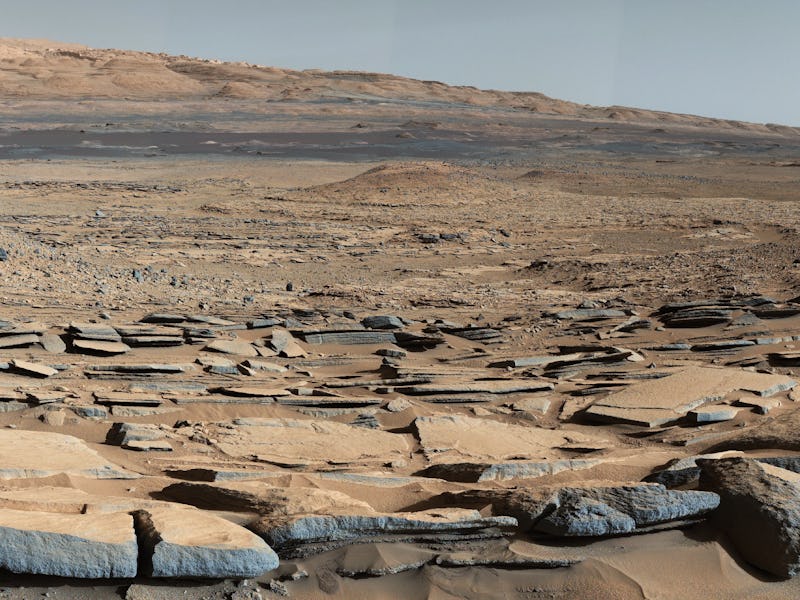Mars’ long-gone lakes are an infinite source of mystery. Some say these massive pools might have once been teeming with life, including — in my version of reality — space narwhals. Now, a team of scientists tell Inverse they might have figured out what could have formed these lakes in the first place, and it’s basically big old Martian methane burps. Still no Martian narwhal fossils, though.
Sediments studied by rovers like NASA’s Curiosity suggest that Mars had bodies of water on it later than 3.6 billion years ago. By this time, the planet had become extremely cold and dry, so it’s extremely unusual that lakes would form and persist on the planet for thousands of years. A group of researchers think that methane “bursts” might have triggered warming that lead to the creation of these lakes. Their research was published on Monday in Nature Geoscience.
Since Mars moons’ kind of suck and don’t stabilize its movement, the planet has been known to wobble quite a bit on its axis. The team posits Mars’s wobble could have caused some if its ice cover to be exposed to the sun for extended periods of time, which would have melted the ice and released methane trapped within the Martian soil and ice. These “bursts” of methane — which is a greenhouse gas — would enter the atmosphere and create a climate temporarily more suitable for the formation of lakes.
The researchers’ numerical simulations suggest these warmer periods caused by methane bursts could have lasted for millions of years.
“In our model, methane clathrate in Mars’ subsurface rapidly decomposes as the result of a large amplitude shift in the tilt of Mars’ spin axis and the resulting changes in surface temperature,” the study’s lead author Edwin Kite, an assistant professor at the University of Chicago, tells Inverse. “The products of the decomposition are water ice and methane gas. The methane gas reaches the atmosphere. This allows seasonal melting of pre-existing surface water ice and snow.”
Clearly, much more research needs to be done to understand Mars’ climate over time, and this is just one hypothesis to clue us into that. Hopefully, NASA’s next Mars rover — which launches in 2020 — will be able to give us a more detailed analysis of the red planet’s soil. Maybe then we can finally figure out where the space narwhals went — fingers crossed.
If you liked this article, check out this video on scientists proving that microbes could survive on Mars.
